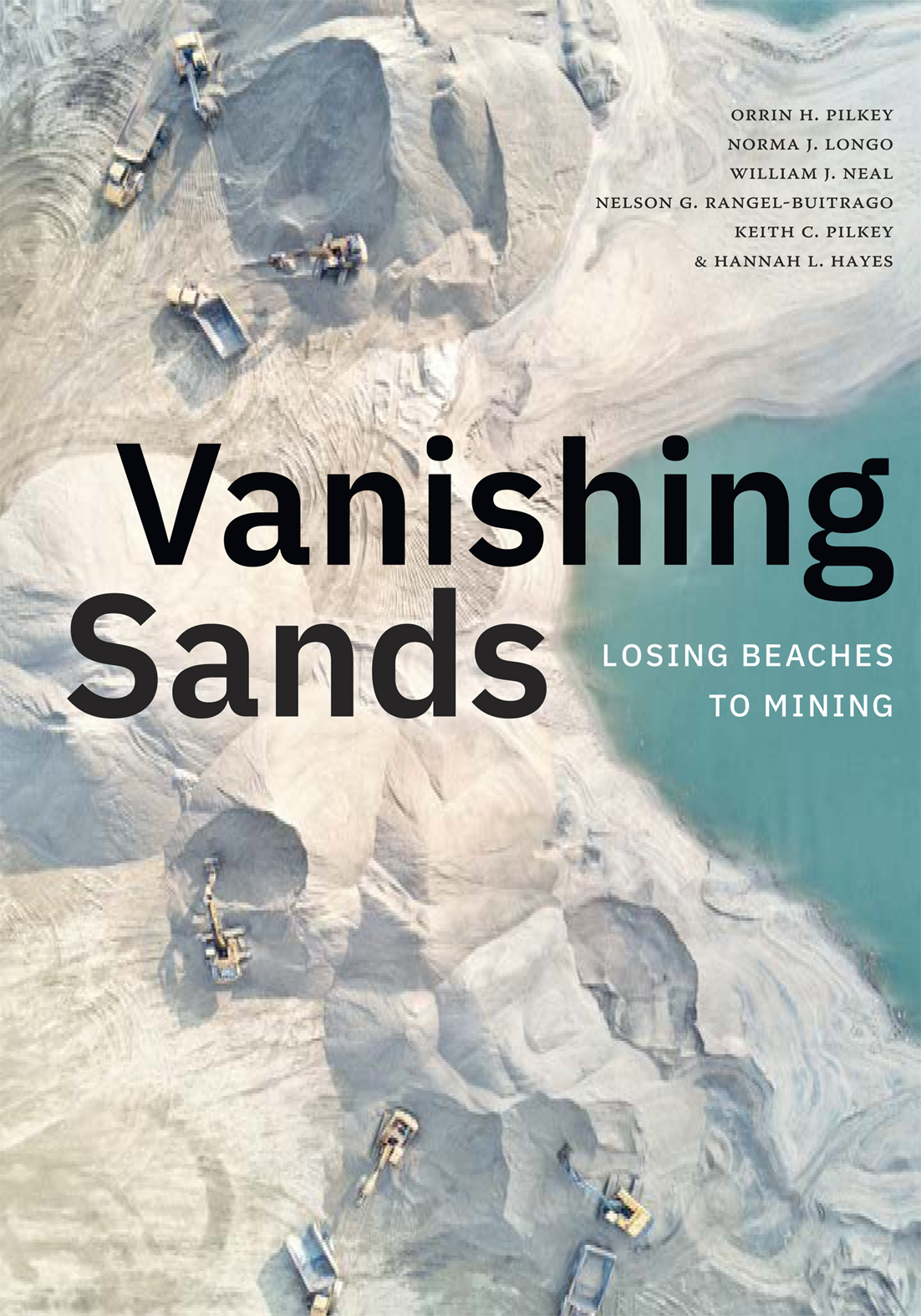
A new book from Duke University Press, “Vanishing Sands: Losing Beaches to Mining,” casts light on the shadowy world of sand mining through case studies that illuminate its disastrous impacts and a concluding chapter that proposes common-sense solutions.
Because of the tradition of viewing beaches as public land, people have historically thought of beach sand as a free and limitless resource, Pilkey and his co-authors explain in their preface to “Vanishing Sands…”
Beaches and coastal dunes are among the most dynamic of nature’s environments —worked on by waves, storms, surf-zone currents, wind, and even ice in the winter. Beaches and dunes occupy a place in coastal space that moves up and landward with sea level rise, or down and seaward if sea level falls. Beginning with Neolithic people and then the Phoenicians and Romans, humans have interfered with these natural processes by locking waves and currents with hard structures to hold the shore in place, in order to protect valued property placed next to the shore.
Today, we continue this compulsion to hold the dynamic ocean shoreline in a static position with the same ineffective techniques, such as dredging channels and building bigger and better seawalls and groins, to protect property (e.g., tourist facilities, ever-bigger houses, refineries, and infrastructure) that could have been placed in less hazardous positions. Globally, most of this modern activity is driven by the tourism industry and the attraction of permanent seaside residency. The resulting boom in urban-suburban development has grown to the very edge of beaches, often a top dunes.
In a time of accelerating sea level rise and increasingly intensifying storms, the world’s sandy beaches and dunes have never been more crucial to protecting coastal environments. Yet, in order to meet the demands of large-scale construction projects, sand mining is stripping beaches and dunes, destroying environments, and exploiting labor in the process.
The authors of Vanishing Sands track the devastating impact of legal and illegal sand mining over the past twenty years, ranging from Africa, Asia, and the Caribbean to South America and the eastern United States. They show how sand mining has reached crisis levels: beach, dune, and river ecosystems are in danger of being lost forever, while organized crime groups use deadly force to protect their illegal mining operations. Calling for immediate and widespread resistance to sand mining, the authors demonstrate that its cessation is paramount for saving not only beaches, dunes, and associated environments but also lives and tourism economies everywhere.
Author(s):
Orrin H. Pilkey is Emeritus James B. Duke Professor of Earth and Ocean Sciences at Duke University and the author and coauthor of many books.
Norma Longo, a geologist, photographer and longtime colleague of Pilkey’s at the Nicholas School;
William Neal, emeritus professor of geology at Grand Valley State University;
Nelson Rangel-Buitrago, professor of geology, geophysics and marine research at the Universidad del Atlantico in Colombia;
Keith Pilkey, an attorney concerned with issues of coastal development;
Hannah Hayes, a scholar of land rights, disaster capitalism and risk management.
Read more on: https://www.dukeupress.edu/vanishing-sands